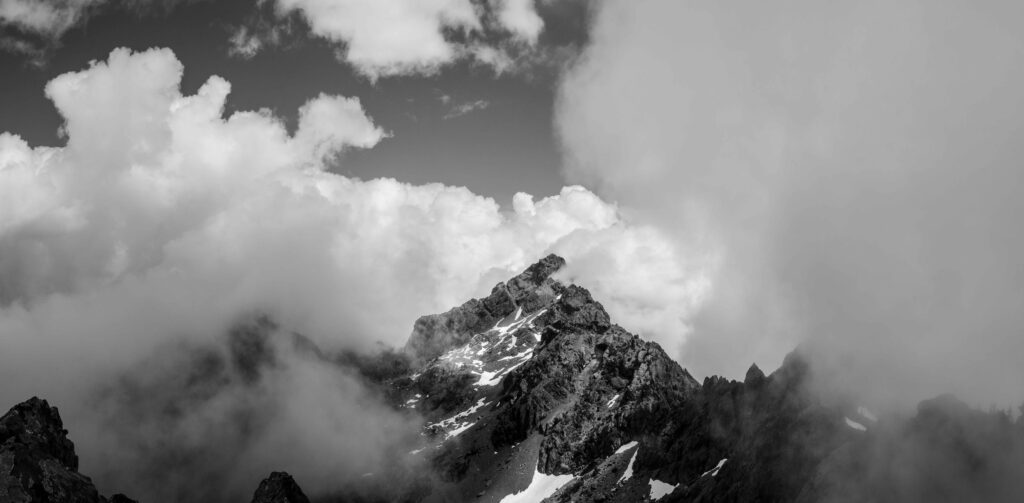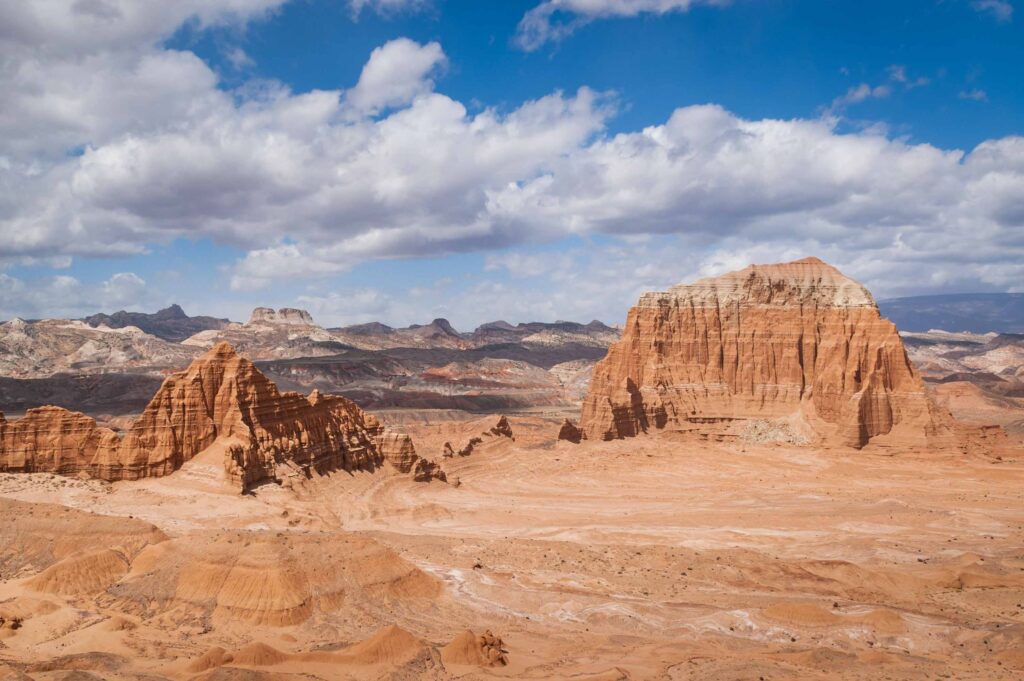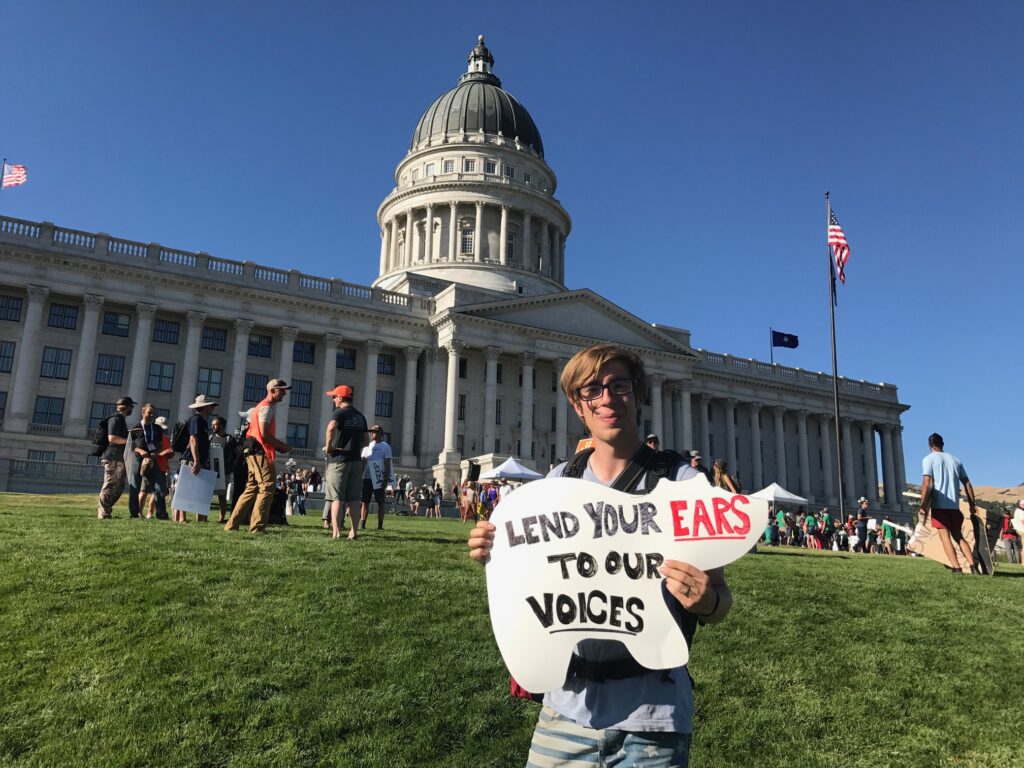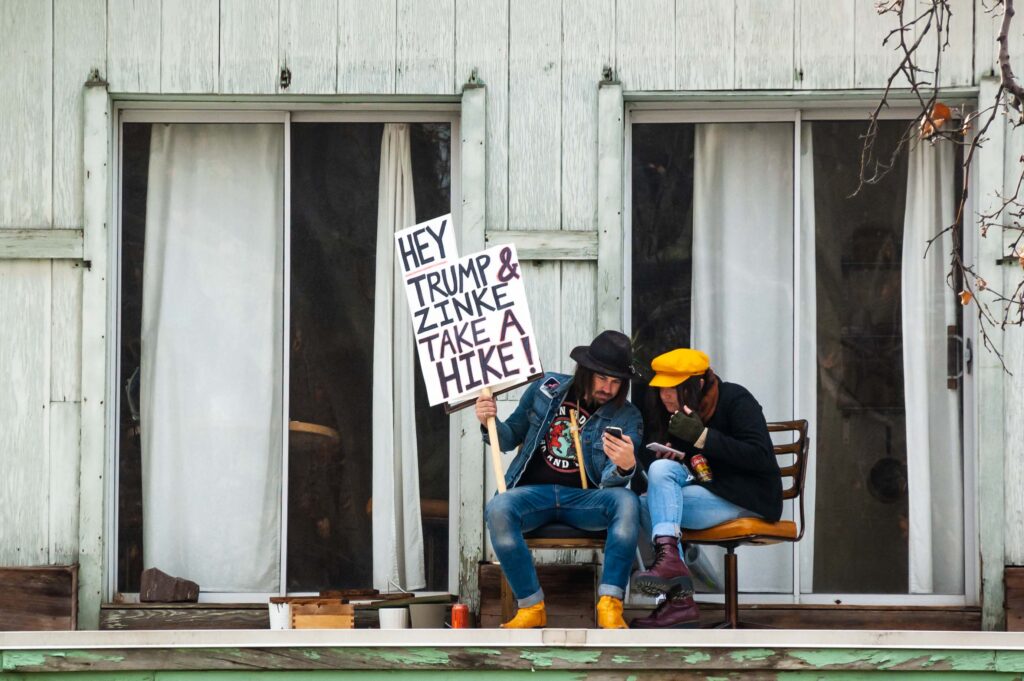By Paul Busch and Bret Stein

Looking toward Mt. Washington from Mt. Ellinor. Both Mountains would be designated wilderness under the Wild Olympics Bill that passed congress in 2020
Part One – by Paul Busch
The National Park system is America’s Best Idea. Wild spaces are as much a part of American identity as baseball and apple pie. We at Slow the Parks are unapologetically in love with our federal system of land, air, and water management, even if we have major disagreements with how that system works.
That’s democracy in action: To speak up for what you believe, to call out what you disagree with, to make compromises, to keep your allies sensible and your opponents ethical.
Almost nothing in the United States is so popular as public lands. The Great American Outdoors Act has just been passed in the U.S. Senate by a supermajority.
While most of our posts on STP are personal in nature, we are hoping to open up to more diverse topics, like park politics, history, and advice.
Why are we getting political?
All public lands, as a matter of definition, are political and legal entities. With virtually unlimited technical power, wild places exist only because we choose for them to remain. How we choose to do that comes in many forms. Legislation, executive order, Tribal law, codes of ethics, cultural traditions, city codes and zoning, international accords, contract, public easement, and private land rules.
Land use, especially private property, forms the basis for the U.S. Constitution. Land provides the major resources by which societies thrive. National Parks were a dream sprung up from a Forester and a President. Clean water is a human right, guaranteed by legal framework, launched by an activist’s book. Land has always been at the heart of politics, and always will.
In short, we have to be political because that is the only way to express our values practically and guarantee public spaces permanently in a democratic society.
Understanding how parks are made, funded, and maintained is going to be a big part of Slow the Parks going forward.
Why aren’t we affiliated with a political group?
That being said, we are very wary of the rise of political polarization. We are choosing to remain independent, and are skeptical of political parties claiming to be the moral authority of the natural world. Even between our authors, we have differences of opinion.
Public spaces are political but they don’t have to be partisan.
What is the Great American Outdoors Act?
Parks are public entities and paid for largely through public funding and entrance fees. Your taxes help fund the parks you recreate in, and you own them.
A major way that new parks are funded is through the Land and Water Conservation Fund. The fund pulls 50% of revenues from oil and gas projects on public land and offshore drilling and allocates them for purchasing lands to become parks (or expand them) in the United States.
Many parks contain private land nested within them, called inholdings. The crisscrossing of land ownership and resource rights complicate public land access and administering environmental legislation, to say the least.
Grazing rights are one example. Grandfathered-in permits are a source of consternation in Yellowstone, Grand Teton, Capitol Reef, and other National Parks. For ease of administration and preserving corridors of wild space, a long term goal of many environmentalists is to purchase these private parcels and permits.

Jailhouse Rock in Capitol Reef National Park. Much of this part of Capitol Reef was open to grazing until 2017 when an NGO purchased the permit for the park.
The Land and Water Conservation Fund produces the funds to buy that land.
Inholdings are just one part. Jodi Peterson from High Country News wrote in 2015, “The LWCF does a lot more than buy inholdings. Roughly half of it goes to providing conservation easements on private land, conserving privately owned timberlands, developing urban parks and ball fields, and funding endangered species projects on non-federal lands.”
The LWCF is widely popular with citizens and politicians alike, but it has had serious hurdles in being funded consistently and fully.
The Great American Outdoors Act seeks to permanently fund the LWCF and provides $9.5 billion for deferred maintenance projects on public lands like fixing employee housing and paving ADA accessible trails. The bill also provides funding for the Indian Education system on American reservations.
It was co-sponsored by Senators Steve Daines and Cory Gardner, two Republicans from western states.
You can read more here, and read the actual text of the bill here.
What’s Next for the Bill?
The bill isn’t a catch-all win for wild spaces.
While the fund includes renewables, the LWCF actively relies on fossil fuel production on public lands, which is probably not a good idea long term. This bill doesn’t undo the Trump administration’s lax enforcement of existing environmental legislation and doesn’t take bold steps for marine parks, which are under-protected.
But we at STP are excited for the progress Congress is making.
This piece of legislation, along with 2019’s Natural Resource Management Act, the Wild Olympics, and Emery County Bills, are pointing the way to a new bipartisan era of public land governance.
Local groups are making enormous headway choosing fights and winning them, and public pressure for climate action and endangered species could very well be on the way. The era we are in isn’t just about Patagonia-wearing lefties either: “Cowboy and Indian” coalitions, private landowners, hunters and anglers, and a focused effort from people of faith are placing conservation above partisan squabbling.
This bill is about to move to the House of Representatives, where it is expected to pass. But in the meantime, there is a great opportunity to take a step into citizenship! Check out Bret’s section below to find out how.
Part Two – by Bret Stein
In conversation with politicians, activities, and from my own experience, I have learned how much of an impact individuals really can make in advocating for public lands.
And the best kind of advocacy you can do is the one that you will do and enjoy. Even just getting outside on public land in a sustainable way is a form of activism.
I would like to share a little of my journey into speaking out for public lands and hopefully inspire you to find some ways that you can too.
How I Got Involved in Environmental Activism
I wasn’t really involved in any politics before my early 20’s. Perhaps that’s something you can relate with. Sure, I did my due diligence for elections and was always sure to vote but that was all.
That changed though with Bear’s Ears National Monument.
I was living in Utah when Bear’s Ears and other National Monuments were put under “review.” I don’t remember how I found out, but it struck a chord with me. I knew I had to do something.
It started small. Signing a Patagonia petition here, posting an article on Facebook there. Then it grew to calling my representatives while walking to class and later to aligning my work schedule to attend rallies.

Bret in Salt Lake City after the July 27, 2017 rally against the illegal shrinking of National Monuments
And I think rallies are where activism really took off for me. There is something tangible about a rally. You feel like you’ve made a difference. That people took notice. You’re no longer a voice echoing alone but standing with hundreds or thousands of other people for a cause.
I attended both Utah Capitol rallies for Bear’s Ears and Grand Staircase Escalante, and they honestly changed me for the better. My participation in public land advocacy has only grown since there.
High Effort, High Return
I believe there is something to be said about how the higher the effort for participation, the more satisfaction comes from speaking out for public lands.
While calling your representative and signing petitions are both super important, attending rallies can leave you feeling like you made an impact and wanting to do more.

Protesters after the December 2, 2017 Salt Lake City rally against the illegal changes to Bears Ears and Grand Staircase Escalante National Monuments
Recently I had an experience that really cemented this principle for me.
An Unplanned Congressional Meeting
This last January I received an email from the Oregon-Washington representative of the Southern Utah Wilderness Alliance (SUWA). I’ve followed SUWA since I lived in Utah and happened to jog by one of their “Protect Wild Utah” signs.
I was surprised to receive a more direct email since I have never officially joined SUWA.
The email was an invitation to go with other friends of SUWA to a meeting at my U.S. congressman’s office and ask them to support America’s Redrock Wilderness Act.
I had never been to a congressional office before. But it was at a convenient time for me and having lived in that area of Utah it was something I wanted to be part of.
I had an amazing experience. Firstly I got to meet some amazing people who also loved and supported public lands in Utah. There was an instant sense of community as all of us had taken time in the middle of a weekday to speak up about something we were similarly passionate about.
The more direct line of communication you could get with the congressman, the better aware they will be of your cause. (emails < calling < office staff meetings < in-person meeting in DC)
Like most meetings at a congressional office, we met with a staff member that works directly with the congressman.
The meeting with the office staff member was amazing. Everyone introduced themselves and explained why they support America’s Redrock Wilderness Act. The office staffer was grateful for our time and thoughts. She took notes. We all shared ideas. She took our concerns seriously and conveyed them to the congressman.
In addition, she talked about how having a meeting at the office—as we were—was one of the best ways to bring issues to the attention of the congressman. She explained that essentially the more direct line of communication you could get with the congressman, the better aware they will be of your cause. (i.e. emails < calling < office staff meetings < in-person meeting in DC).
A personal highlight for me was when the office staffer mentioned that our congressman had a weekly bipartisan brunch with other representatives. I asked if Congressman John Curtis attended that brunch and that he may be a good person for our congressman to speak with.
John Curtis is the congressman for much of Southern Utah. For a time I lived in the town he was mayor of and have found him to be a great person that works towards bipartisan environmentalism.
Not only did the office staffer appreciate my idea, but she also loved it and was excited about it! I have no doubt she passed the word along.
I walked out of that office truly feeling like I had taken part in America’s politics. Like I may have actually said something that made a difference towards public lands. Just writing this I am full of joy and excitement about the experience.
Going to my congressman’s office changed the way I feel about my ability to participate in politics. It helped me feel like I have a voice in my country.
Since then I have attended meetings with both of my senator’s staffers to also ask their support on America’s Redrock, and I continue to feel like I can make a difference.
We Can All Participate
The beauty of my experiences is that they’re not unique. You, and anyone, can have similar experiences. If you really want to, you can book a meeting at your representative’s office.
But there are dozens of other ways you can get involved, and really make a difference.
I believe one of the best ways is to simply get informed. We can’t take action if we don’t know an action is needed.
A great way to stay informed is by signing up for an organization’s newsletter. Whether that be national organizations like the Sierra Club, regionally focused groups like Southern Utah Wilderness Alliance, or a city-specific 350 group, there are many you can choose from.
Check out a few listed on our take action page.
Local groups are a great place to meet like-minded people and get involved. Sometimes they hold potlucks!
You can volunteer your time as a photographer, or canvassing door to door, or just be a supporter at a local youth-led rally.
See more ideas at our take action page, or email us for some ideas!
Conclusion
I was thrilled when Paul told me that the Great American Outdoors Act Passed. But it couldn’t have happened without the thousands of people who advocated for it over many years.
In the fight for public lands every voice—your voice—matters.
So I urge you to take a breath, slow down, and speak up.
